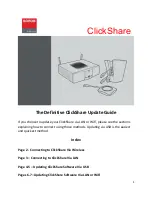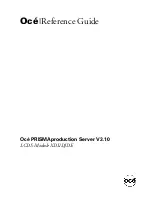
(4)
3.3 Single Folds
See Fig. 8. The single fold can be made with
either fold table. The selected fold table
should be inserted folding end inward, and
the other table should be inserted deflector
end inward. Single-folding in the 1st fold
table provides better results when light-
weight paper stock is used, and it generally results in greater
accuracy.
Single-folding with the 2nd fold table will facilitate stacking and
minimize curl when heavier stocks are run. Crushed folds are an
indicator that folding should be done with the 2nd fold table.
3.4 Double Folds
To make the standard double folds in sheets sizes of 6" x 9", 8
1/2" x 11", 1 1/2" x 14", and 11" x 17", refer to the simplified
fold chart on the receiving tray to find the rule settings for the
paper stops. When double folding, the folding end of both fold
tables must be installed with the folding ends inward. For sheets
of other sizes, manually fold a sheet in the desired fashion and
measure the folded sheet to determine approximate fold table
rule settings. Final adjustments can be made by running a sheet
through and readjusting
as necessary with the
micro adjustment. See
Fig. 9 for common
double folds.
Note:
The folder
should be run at the same speed during set-up as it will be dur-
ing production to guarantee folding precision.
3.5 Folding Pre-folded Sheets, Bulletins &
Booklets
French or Baronial folds can be made by refolding the folded
stock. See Fig. 10. To fold a pre-folded sheet in half for a French
fold, set the folder up the same way as for a single fold. For a
Baronial fold, set the folder up as for a double fold. Be sure to
adjust the retarder for thickness of paper.
Note:
Greater
accuracy will
result if the paper
is scored during
the first folding
operation. This
does not require an extra operation.
3.6 Folding Stapled Sets
We do not recommend folding stapled sets as it shortens the life
of rubber rollers. However, if necessary, we suggest the follow-
ing:
1. Adjust retarder to thickness of stapled set.
2. Do not attempt to fold more than three (3) sheets at one
time.
3. Use two (2) staples (one on each side of the feed roller) in
staggered locations.
4. If the above does not work, raise the retarder to maximum
opening, and hand feed individual sets.
3.7 Set The Stacking Wheels
The function of the stacking wheels, which are located on the
conveyor table, is to arrange the folded sheets into an overlap-
ping stack. Position the stacking wheel assembly so that the
leading edge of a folded sheet touches the wheels when the trail-
ing edge just falls onto the exit table.
For most folds, the deflector faces upward (in a non-functional
position). To eliminate nesting and to improve the stacking of
very short folds, the deflector may be positioned to face down-
ward. This is accomplished by removing the spring-loaded
stacking wheel assembly and turning the deflector to a down-
ward position. The height of the deflector is also adjustable by
means of slots on the deflector. The deflector (plate only) may
be removed from the assembly when it is necessary to mount
strippers while perforating. Two sets of holes are provided for
positioning the stacking wheels. The front set will position the
deflector closer to the exit for short folded stock.
A stacking wheel hook hangs from the 1/2" tie rod in the exit
area to elevate the stacking wheel assembly, if necessary, for
proper delivery of large sheets. Simply rest the stacking wheel
axle in the curved section of the hook.
3.8 Loading Paper
1. Adjust the paper guides’ inner edges to the width of the
paper (a ruler on the feed table is provided for easy adjust-
ment). Avoid crowding the paper as well as adjusting too
loose. Allow 1/32" of play.
2. Take a stack of paper about 1/2" to 3/4" in height and jog it
to align the edges.
3. Place the stack between paper guides. Turn the folder on
and adjust the speed.
4. The paper should separate and feed one sheet at a time. If
two or more sheets are fed together, turn the thumb screw on
the retarder assembly clockwise slightly in increase pres-
sure.
5. While the folder is operating, more sheets may be added to
the stack on the feed table, but do not overload the stack.
Continue this procedure until the run is complete.
3.9 Speed Control Adjustment
The control knob is a combination On-Off switch and variable
speed control. Turn the knob clockwise to reach the ON position,
and continue to turn clockwise to increase the speed.
Содержание 959
Страница 9: ... 9 Reference Illustrations Refer to Parts List pages 10 11 ...
Страница 12: ... 12 ...
Страница 13: ... 13 ...
Страница 15: ... 15 ...


































